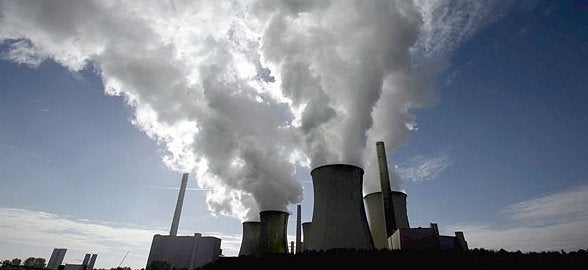
It's called the climate crisis for a reason: global warming is the biggest and most urgent global issue of our time. A crisis of this magnitude compels us to ask a very simple question of ourselves:
"What can I do about it?"
As I wrote in my new book, Coming Clean: Breaking America's Addiction to Oil and Coal, we can't just focus on being good consumers:
No doubt you've been told to change your light bulbs, properly inflate your tires, turn down the thermostat, and vote every year or so. Those are all useful ways to help create a clean-energy future. But they're not nearly enough. Let me be blunt: if we only take individual action and do nothing else to save our climate, we're probably cooked. We need to aim higher by changing corporate America and challenging our political leaders.
The most strategic action we can take to fight climate change and embrace a clean energy future is to stop the construction of new coal-fired power plants. Consider what the good folks at Architecture 2030 have to say about these new plants:
•If every household in the U.S. changed a 60-watt incandescent light bulb to a compact fluorescent, the CO2 emissions from just two medium-sized coal-fired power plants each year would negate this entire effort.
•California passed legislation to cut CO2 emissions in new cars by 25% and in SUVs by 18%, starting in 2009. If every car and SUV sold in California in 2009 met this standard...The CO2 emissions from only one medium-sized coal-fired power plant, in just eight months of operation each year, would negate this entire effort.
•The Campus Climate Challenge calls for all college campuses in the U.S. to reduce their CO2 emissions to zero. If every college campus building in the U.S. met this challenge, the CO2 emissions from just four medium-sized coal-fired power plants each year would negate this entire effort.
Al Gore famously remarked, "I can't understand why there aren't rings of young people blocking bulldozers, and preventing them from constructing coal-fired power plants."
Last week, residents of Wise County, Va. took Mr. Gore's advice. The citizens of Wise County, a rural community in the southeastern Appalachian Mountains, have been fighting the construction of Dominion Power's new coal-fired power plant for more than two years. Despite exercising every available legal avenue, from a petition signed by 46,000 Virginians to three lawsuits, construction of the coal plant persists.
Last Monday, more than 30 people blockaded the construction site. Eleven were arrested after locking their bodies to eight large steel drums, two of which had operational solar panels affixed to the top that illuminated a banner reading, "Renewable jobs to renew Appalachia." Young and old, urban and rural, these people came together because the construction of this 585-megawatt power plant not only poses a massive risk to the health and history of Appalachians, but it also stands in stark opposition to all current efforts to halt global warming.
The images are inspiring. See for yourself by watching this video by Rainforest Action Network.
Rev. Martin Luther King, Jr. once declared, "Injustice anywhere is a threat to justice everywhere." A new coal plant in Virginia or a destructive coal mine in Appalachia are not isolated challenges; they are part of a national energy system run amok. As Bo Webb, a resident of Coal River Mountain, W.Va., declared, "We are not going to continue to stand idly by and watch our children be robbed of their right to clean air and clean water. This is no longer an Appalachian problem, it's an American problem."
Several dozen new coal plants are still on the drawing board, several of which are already under construction. A movement is afoot. Americans are beginning to work together to stop these new plants from being built, and to replace many of the oldest, dirtiest plants with efficient, clean energy such as solar and wind.
Want to lend a hand?
